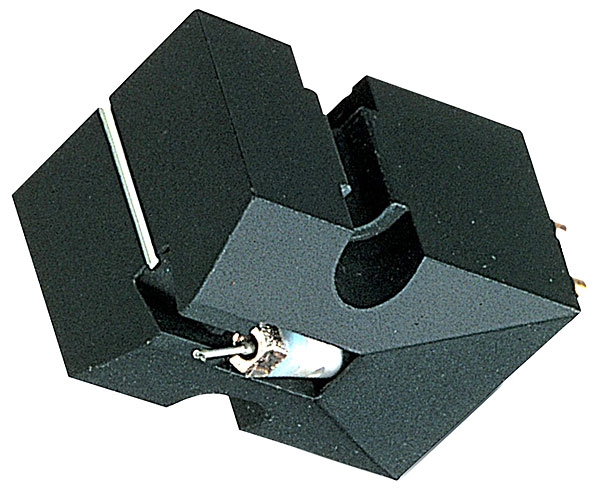Although it benefited from designer Jonathon Carr’s vast experience, this was not totally hand crafted by Lyra’s artisan Yoshinori Mishima when it was first released in the UK in 2007. Instead, the initial construction was outsourced. It was also the first to use a Namiki MicroRidge line-contact stylus, however it was wrapped in the traditional ‘6 nines’ OFC copper wire. The suspension was also calibrated for high traceability, which reflects the expected use of such a “cheap” product. It had no pole parts, instead relying on two symmetrical disc magnets to create a magnetic field that allowed the coils and cantilever to move more freely.
For stiffness, the skeleton body was machined from a single piece of aluminium alloy, then hard-anodized, and its shape was chosen to minimise the presence of conductive elements near the magnetic gap and signal generator coils. There were no subcarriers, allowing for the most direct mechanical connection between the boron cantilever and the motor, resulting in the most efficient energy transfer possible. The signal output pins were rhodium coated for durability more than acoustic considerations. It, according to Jonathon Carr, lasts significantly longer than gold plate.
The Ortofon Rondo Bronze, a cartridge with which I have a lot of experience, was the Dorian’s most obvious European competition. As a result, hearing them both in my system to draw comparisons was fascinating. What quickly became clear is that they’re two very different monsters, targeting two very different markets – and the fact that this is supposed to be Lyra’s most entry-level, ‘user-friendly’ design to date tells a lot about the rest of the Lyra range.
Even at the maximum recommended 2g tracking force, the Dorian’s highly explicit sound is the first thing you notice about it. It’s both lightning fast and brilliant, in a way that makes the already superb Rondo Bronze sound delightfully sedative. Measurements verified a significantly rising high treble response, which you can’t ignore, but you can work around it with the correct ancillaries and enjoy the Dorian’s gigantic killing abilities.
Café Regio by Isaac Hayes featured a dizzying amount of detail as well as a deliciously beautifully etched – if a touch harsh – hi hat sound. I’ve never heard a mid-priced MC provide such a rapid, gripping performance, complete with razor-sharp attack transients and outstanding dynamics. The Rondo Bronze, in comparison, sounds heavy and uncommitted. The bass was rich and powerful, starting and ending as quickly as practically anything I’d heard before. When compared to a van den Hul Frog and a Koetsu Red K Signature, the Lyra’s sound was beautifully sharp, detailed, and dynamic (the other two sounded fuzzy and out-of-focus) – as well as its toppy treble.
Electronic music like Kraftwerk’s Computer Welt sounded hugely energetic and musically engaging through the Dorian, while classic eighties rock like REM’s Maps and Legends had it unearthing massive amounts of detail across an impressively wide and deep soundstage while hanging it all together in a wonderfully musical way. It doesn’t have the romance of the more expensive Koetsu or the smoothness of the similarly priced Ortofon, but wow can it extract data from the groove! At the price, it’s exceptional in this regard. It’s certainly ‘brightly illuminated,’ which becomes all too apparent when playing LPs with poor surfaces (it screams snap, crackles, and pops from the rooftops), but with a smooth system and/or turntable, it’s a bargain.







